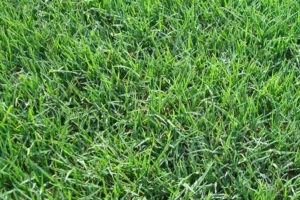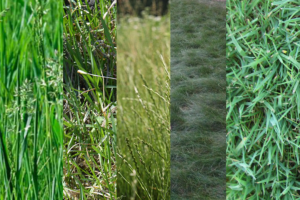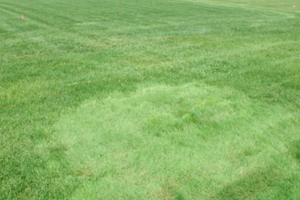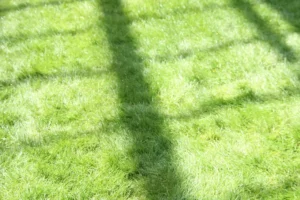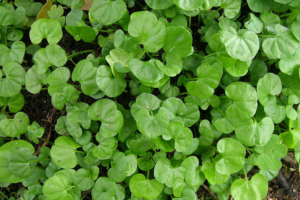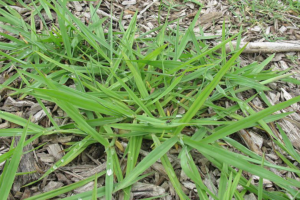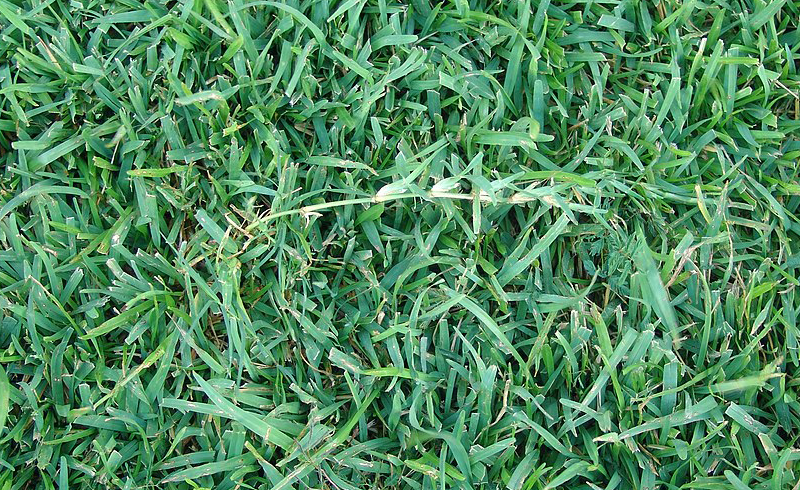
Introduction
Did you know Centipede Grass, a favorite among homeowners in the southern United States, is a native of Southeast Asia and China? This low-maintenance, heat-tolerant grass has traveled across continents to become a staple in American lawns. Its ability to thrive in poor soil conditions and resist pests and diseases makes it popular for homeowners who want a lawn without high maintenance.
Centipede Grass, scientifically known as Eremochloa ophiuroides, is a warm-season turfgrass known for its medium to light green color and coarse texture. It’s a perennial grass, meaning it comes back year after year, and it’s a favorite in the southern parts of the United States, particularly in areas with sandy, acidic soils.
The importance of Centipede Grass cannot be overstated. It’s not just lawn grass; it’s part of the ecosystem, providing habitat for insects and small animals. Moreover, its dense growth helps prevent soil erosion, making it an environmentally friendly choice for many homeowners. Whether you’re a homeowner looking for an easy-to-maintain lawn or a landscaper seeking a hardy grass variety, Centipede Grass is worth considering.
History and Origin of Centipede Grass
Where Centipede Grass Originates From
Centipede Grass, known scientifically as Eremochloa ophiuroides, is native to Southeast Asia and China. It thrives in tropical and subtropical climates, making it a common sight in these regions. The grass’s unique characteristics, such as its ability to grow in poor soil conditions and its resistance to pests and diseases, have made it a popular choice in its native regions for centuries.
In its native habitats, Centipede Grass is often found in open, sunny areas where it forms dense mats. Its ability to grow in various soil types, including sandy and acidic soils, has allowed it to flourish in various environments. This adaptability has also played a key role in its spread to other parts of the world.
How it Spread to Different Parts of the World
The journey of Centipede Grass from its native regions to other parts of the world is fascinating. It was first introduced to the United States in 1916, and since then, it has become a staple in many southern states. The grass’s adaptability to different climates and soil types has played a significant role in its spread. Despite originating from tropical and subtropical climates, Centipede Grass has shown remarkable resilience and adaptability, thriving in the sandy, acidic soils of the southern U.S.
This adaptability, combined with its low maintenance requirements, has contributed to its widespread popularity and use in lawns across the United States and beyond. Today, Centipede Grass is not just limited to the U.S. and its native regions in Asia. It has also found its way to other parts of the world, including Australia and South America, where it is used for similar purposes as in the U.S. – as a low-maintenance, hardy grass for lawns and public spaces.
Characteristics of Centipede Grass
Description of its Physical Characteristics
Centipede Grass is known for its distinctive physical characteristics that set it apart from other types of grass. It has a medium to light green color, which gives lawns a vibrant and lush appearance. The grass blades are relatively short and have a coarse texture, giving the lawn a dense and uniform look. The leaves are hairy, and the stems are flattened, often slightly curved.
The growth habit of Centipede Grass is also unique. It grows close to the ground and spreads through stolons, or runners, which extend out from the main plant and take root in the soil. This growth habit allows Centipede Grass to form a dense mat that effectively crowds out most weeds, reducing the need for frequent weeding.
Growth Habit and Lifecycle
Centipede Grass is a warm-season grass that grows most actively during the late spring and summer months when temperatures are high. During this period, it spreads rapidly and can quickly cover a large area. As temperatures drop in the fall, its growth slows down and enters a dormant state during winter.
The lifecycle of Centipede Grass is perennial, meaning it lives for more than two years. It returns yearly, regrowing in the spring from stolons that survived the winter. This perennial nature and its dense growth habit make Centipede Grass a durable and long-lasting lawn choice.
Unique Features that Distinguish it from Other Types of Grass
What sets Centipede Grass apart from other types of grass is its low maintenance requirements. It is more tolerant of poor soil conditions than other grass species and requires less mowing due to its slow vertical growth. Additionally, it has a high tolerance for heat and can survive in full sunlight with minimal water, making it an ideal choice for areas with hot, dry summers.
Another unique feature of Centipede Grass is its ability to resist pests and diseases. It’s not entirely immune, but it’s more resistant than many other types of grass. This resistance, combined with its low maintenance needs, makes Centipede Grass a popular choice for homeowners and landscapers looking for hardy, easy-to-care-for lawn grass.
Ideal Growing Conditions for Centipede Grass
Climate and Temperature Requirements
Centipede Grass is a warm-season grass which thrives in regions with hot summers and mild winters. It is most commonly found in the southeastern United States, where the climate suits its growth perfectly. The grass grows most actively when temperatures are between 70 and 90 degrees Fahrenheit, making it an ideal choice for areas with long, hot summers.
However, Centipede Grass is not as cold-tolerant as some other warm-season grasses. It can withstand mild winters but may struggle or even die off in areas where temperatures regularly drop below freezing. Despite this, the grass’s ability to enter a dormant state during the colder months allows it to survive and regrow when temperatures rise again.
Soil Type and pH Level
One of the reasons for the popularity of Centipede Grass is its adaptability to different soil types. It can grow in various sandy, loamy, and clay soils. However, it thrives best in well-drained, sandy soil. This soil type allows the grass’s roots to penetrate deeply, which helps it withstand drought conditions.
Centipede Grass prefers slightly acidic to neutral soils, with a pH between 5.0 and 6.5. It is more tolerant of acidic soils than other grass types, often requiring a pH closer to neutral. However, if the soil is too acidic or alkaline, the grass may need help absorbing nutrients, leading to poor growth and color.
Sunlight and Water Needs
Centipede Grass requires a good amount of sunlight to grow well. It can tolerate some shade, but it thrives in full sun. Areas of the lawn that receive less than six hours of direct sunlight daily may see thinner, less vigorous growth.
As for water, Centipede Grass is more drought-tolerant than many other types of lawn grass. It can survive on relatively little water, making it a good choice for drought-prone areas. However, it should receive about 1 inch of water per week from rainfall or irrigation for optimal growth and health. During periods of extreme heat or drought, additional watering may be necessary.
Planting and Caring for Centipede Grass
How to Plant Centipede Grass
Centipede Grass can be established in a lawn through seeding, sodding, or plugging. Each method has advantages and considerations regarding cost, labor, and time to establish a lawn.
Seeding is the most cost-effective method but requires the most labor and time to establish a lawn. The first step is to till the area where you want the grass to grow and level it using a rake or roller. If another grass was growing in the area previously, it should be removed before tilling or treated with a herbicide. After the area has been prepared, the Centipede Grass seed can be spread. It’s recommended to mix the seed with sand for easier spreading. After planting, the area should be thoroughly watered for three weeks.
Sodding is the fastest and least labor-intensive way to establish a Centipede Grass lawn but it is also the most expensive. The process involves tilling the soil, adding organic material and a nitrogen-rich fertilizer, and then laying the strips of Centipede Grass sod over the tilled soil. The sod should be rolled down, watered thoroughly after laying, and kept well-watered for three to four weeks.
Plugging falls in the middle regarding labor, cost, and time to establish a lawn. The process is similar to sodding, but instead of laying strips of sod, Centipede Grass plugs are inserted approximately 1 foot apart in the lawn. After the plugs are inserted, the area should be thoroughly and kept well-watered for three to four weeks.
Caring for Centipede Grass
Once your Centipede Grass lawn is established, it requires very little maintenance. However, some care is needed to keep it healthy and vibrant. This involves occasional fertilizing and watering.
Centipede Grass should be fertilized twice a year, once in the spring and once in the fall, with a nitrogen-rich fertilizer. Over-fertilizing can lead to problems, so applying the fertilizer lightly is essential.
Watering is only necessary when the grass shows signs of water stress during drought. Signs of water stress include a faded color or wilted look to the grass. Watering deeply rather than shallowly once a week rather than several times a week is recommended during drought.
Centipede Grass is a low-maintenance, hardy grass ideal for homeowners in warmer areas. With the proper care and conditions, it can provide a lush, green lawn that’s the envy of the neighborhood.
The Benefits and Drawbacks of Centipede Grass
Benefits of Centipede Grass
Centipede Grass is a popular lawn choice in the southern United States for several reasons. One of its main advantages is its low maintenance requirements. Unlike some other grass species, Centipede Grass doesn’t require frequent mowing. Its growth habit is to spread laterally rather than vertically, which means it maintains a relatively consistent height without regular trimming.
Another benefit of Centipede Grass is its tolerance for poor soil conditions. It can thrive in sandy or acidic soils where other grasses might struggle. This makes it a good choice for areas with less-than-ideal soil quality. Additionally, Centipede Grass is more drought-tolerant than many other grass species. It can withstand periods of low rainfall, making it a good choice for drought-prone areas.
Centipede Grass is also known for its pest resistance. It is less likely to be affected by common lawn pests such as grubs and nematodes, which can cause significant damage to other types of grass. This resistance can reduce the need for pesticide use, making Centipede Grass a more environmentally friendly choice.
Drawbacks of Centipede Grass
Despite its many benefits, Centipede Grass also has some drawbacks that should be considered. One of the main disadvantages is its lack of cold tolerance. While it thrives in warm climates, Centipede Grass can be damaged or killed by freezing temperatures. This limits its use to warmer regions and can make it a poor choice for areas with cold winters.
Another drawback of Centipede Grass is its slow growth rate. While this can be an advantage regarding reduced mowing requirements, it also means that Centipede Grass can take a long time to establish. If the grass is damaged or lawn areas become bare, the Centipede Grass can take a while to fill these areas.
Finally, while Centipede Grass tolerates poor soil conditions, it could do better in alkaline soils. If your soil has a high pH, you may need to amend it with sulfur or another soil acidifier to lower the pH before planting Centipede Grass.
Planting and Caring for Centipede Grass
How to Plant Centipede Grass
Centipede Grass can be established in a lawn through seeding, sodding, or plugging. Each method has advantages and considerations regarding cost, labor, and time to establish a lawn.
Seeding is the most cost-effective method but requires the most labor and time to establish a lawn. The first step is to till the area where you want the grass to grow and level it using a rake or roller. If another grass was growing in the area previously, it should be removed before tilling or treated with a herbicide. After the area has been prepared, the Centipede Grass seed can be spread. It’s recommended to mix the seed with sand for easier spreading. After planting, the area should be thoroughly watered for three weeks.
Sodding is the fastest and least labor-intensive way to establish a Centipede Grass lawn but it is also the most expensive. The process involves tilling the soil, adding organic material and a nitrogen-rich fertilizer, and then laying the strips of Centipede Grass sod over the tilled soil. The sod should be rolled down, watered thoroughly after laying, and kept well-watered for three to four weeks.
Plugging falls in the middle regarding labor, cost, and time to establish a lawn. The process is similar to sodding, but instead of laying strips of sod, Centipede Grass plugs are inserted approximately 1 foot apart in the lawn. After the plugs are inserted, the area should be thoroughly and kept well-watered for three to four weeks.
Caring for Centipede Grass
Once your Centipede Grass lawn is established, it requires very little maintenance. However, some care is needed to keep it healthy and vibrant. This involves occasional fertilizing and watering.
Centipede Grass should be fertilized twice a year, once in the spring and once in the fall, with a nitrogen-rich fertilizer. Over-fertilizing can lead to problems, so applying the fertilizer lightly is essential.
Watering is only necessary when the grass shows signs of water stress during drought. Signs of water stress include a faded color or wilted look to the grass. Watering deeply rather than shallowly once a week rather than several times a week is recommended during drought.
In conclusion, Centipede Grass is a low-maintenance, hardy grass that’s ideal for homeowners in warmer areas. With the proper care and conditions, it can provide a lush, green lawn that’s the envy of the neighborhood.
Common Issues and Solutions with Centipede Grass
Common Problems with Centipede Grass
Despite its hardiness and low maintenance requirements, Centipede Grass has its problems. Iron deficiency is one of the most common issues, which can cause the grass to turn yellow. This is often due to high pH levels in the soil, as Centipede Grass prefers slightly acidic to neutral pH levels. To correct this, apply an iron supplement to the lawn or use a fertilizer designed explicitly for Centipede Grass.
Another common problem is thatch buildup. Thatch is a layer of dead grass and other organic material accumulating on the soil’s surface. While a small amount of thatch can be beneficial, providing a natural mulch for the grass, too much thatch can prevent water and nutrients from reaching the grassroots. Regular dethatching can help prevent this problem.
Centipede Grass is also susceptible to several pests and diseases. Common pests include white grubs, mole crickets, and nematodes, while diseases can include brown patches, dollar spots, and gray leaf spots. Regular lawn monitoring can help detect these problems early, and appropriate treatments can be applied as needed.
Solutions for Centipede Grass Problems
The solutions for Centipede Grass problems largely depend on the specific issue. Applying an iron supplement or a Centipede Grass-specific fertilizer for iron deficiency can help restore the grass’s green color. If the problem is due to high soil pH, you may need to amend the soil to lower the pH.
For thatch buildup, regular dethatching can help maintain a healthy lawn. This can be done manually with a dethatching rake, or a power dethatcher may be more efficient for more extensive lawns. After dethatching, could you be sure to water and fertilize the lawn to help it recover?
Pest and disease problems are more challenging to address. Appropriate insecticides can be applied for pests, but it’s essential to identify the pest before choosing a treatment. Fungicides can often help with diseases, but correctly identifying the disease is crucial. In some cases, improving the overall health of the lawn – such as by proper watering, mowing, and fertilizing – can help prevent pest and disease problems.
In conclusion, while Centipede Grass is a relatively low-maintenance grass, it has potential problems. However, with regular monitoring and appropriate care, these issues can be effectively managed, and you can enjoy a healthy, vibrant Centipede Grass lawn.
Planting and Establishing Centipede Grass
Planting Centipede Grass
Planting Centipede Grass can be rewarding but requires some planning and preparation. The first step is to choose the right time to plant. Centipede Grass is a warm-season grass which grows best in warm weather. The ideal time to plant is in late spring or early summer when soil temperatures are consistently above 70 degrees Fahrenheit.
Before planting, it’s essential to prepare the soil. You can start by removing any existing grass or weeds from the area. Then, till the soil to a depth of about 6 inches to loosen it and improve its structure; if the soil is poor, consider adding organic matter, such as compost, to improve its fertility and drainage.
Centipede Grass can be planted from seed, sod, or plugs. Seeds are the most economical option, but they can take a while to germinate and establish. Sod provides an instant lawn, but it’s more expensive and requires more installation labor. Plugs are small, individual grass plants planted in holes throughout the lawn. They’re a good compromise between seeds and sod, offering quicker establishment than seeds at a lower cost than sod.
Establishing Centipede Grass
Once the Centipede Grass is planted, it’s essential to care for it properly to ensure it establishes well. Watering is crucial during this stage. The soil should be kept consistently moist but not soggy. This usually means watering daily for the first few weeks, then gradually reducing the frequency as the grass establishes.
Fertilizing is also essential for establishing Centipede Grass. However, this grass requires less fertilizer than some other grass species. A light application of balanced lawn fertilizer in the spring and fall should be sufficient. It’s also a good idea to do a soil test before fertilizing to determine the soil’s nutrient levels and pH. Centipede Grass prefers slightly acidic soil, so if the pH is too high, you may need to apply a soil acidifier.
Centipede Grass can establish a beautiful, low-maintenance lawn with proper care. It’s an excellent choice for homeowners in warm climates who want a grass that’s easy to care for and tolerant of poor soil and drought conditions.
Maintenance and Care of Centipede Grass
Mowing and Watering
Centipede grass is known for its low maintenance requirements but still needs some care to look its best. Mowing is an essential part of this care. Centipede grass prefers to be kept at a height of about 1 to 2 inches. Regular mowing helps to keep the grass healthy and prevents it from becoming too thick or woody. It’s best to use a sharp mower blade to ensure clean cuts and prevent damage to the grass.
Watering is another essential aspect of centipede grass care. While this grass species is drought-tolerant, it still needs regular watering to stay green and lush, especially during dry periods. The key is to water deeply but infrequently. This encourages the grass to develop deep roots, which helps it withstand drought better. A good rule of thumb is to water when the top inch of soil becomes dry.
Fertilizing and Pest Control
Fertilizing is also part of centipede grass care, but it’s essential to do what is necessary. This grass species requires less fertilizer than other grass types. Too much fertilizer can harm centipede grass by causing thatch buildup and increasing disease susceptibility. Lightly applying a balanced lawn fertilizer once or twice a year is usually sufficient.
Pest control is another aspect of centipede grass maintenance. While this grass resists many pests, certain insects, such as mole crickets and white grubs, can still be affected. Regular monitoring can help detect and prevent these pests from causing significant damage early. If pests are detected, it’s best to use a targeted pesticide to control them.
Centipede grass can provide a beautiful, low-maintenance lawn perfect for warm climates with proper maintenance and care.
Case Studies on Centipedegrass
Centipedegrass Weed Control
A study by the University of Florida’s Institute of Food and Agricultural Sciences (IFAS) found that maintaining a weed-free Centipedegrass lawn is as simple as intelligent management and effective use of herbicides. The study suggests that only three types of herbicides are needed: a selective grass herbicide, a potent broadleaf herbicide, and a sedge herbicide.
The selective grass herbicide recommended is Sethoxydim. This herbicide is effective against grassy weeds like Crabgrass, Bahiagrass, and Goosegrass, which can be just as problematic as broadleaf weeds. Sethoxydim is the active ingredient in many branded products and controls weedy grass species without seriously harming Centipedegrass or broadleaf ornamental trees and shrubs. It can also remove these weeds from flower beds.
The study also emphasizes the importance of a solid broadleaf herbicide. Many homeowner-grade products at garden centers don’t have the “juice” to control tough broadleaf weeds like dollar weed, Doveweed, Virginia Buttonweed, and others. The study recommends a commercial grade 3-way product like Celsius WG by Bayer for this job. Celsius WG is a 3-way combination herbicide with a healthy dose of Dicamba as its primary ingredient. This product effectively controls the most challenging broadleaf weed problems with one or two applications.
Lastly, the study highlights the need for a quality sedge control herbicide. Sedges, often called “nutgrass,” look like grasses but are a completely different category of plants and require specialized herbicide chemistries to achieve control. The herbicide recommended for this is Halosulfuron-methyl, the active ingredient in Sledgehammer. This product effectively controls various sedge weeds but works very slowly and requires patience.
The study concludes by reminding homeowners that while these three herbicides can control almost any weed they may encounter in their lawns, herbicides are not substitutes for proper lawn management. When good cultural lawn practices are followed, such as mowing at the correct height, only watering when necessary, and following UF/IFAS fertilizer recommendations, chemical weed control may not even be necessary in many cases.
Conclusion
The Versatility of Centipede Grass
Centipede Grass has proven to be a versatile and resilient choice for homeowners, particularly in warmer climates. Its low maintenance requirements and its ability to thrive in less-than-ideal soil conditions make it an attractive option for those seeking a lush, green lawn with minimal effort. The case studies we’ve explored highlight the practicality of Centipede Grass and its adaptability to various challenges, from weed control to drought conditions.
However, like any plant, Centipede Grass is not without its drawbacks. Its lack of cold tolerance and slow growth rate can be limiting factors, particularly in regions with harsh winters or for homeowners seeking a quick solution for lawn coverage. Despite these challenges, with the proper care and attention, Centipede Grass can provide a beautiful, low-maintenance lawn that adds value and aesthetic appeal to any home.
Final Thoughts
In conclusion, Centipede Grass offers a unique combination of low maintenance, resilience, and beauty, making it a popular choice for homeowners in warmer climates. While it has its challenges, these can be effectively managed with the proper care and attention. Whether you’re a seasoned gardener or a novice, Centipede Grass is a worthy consideration for your lawn.
Remember, understanding its needs and characteristics is the key to a healthy Centipede Grass lawn. From planting and establishment to ongoing maintenance and problem-solving, being informed and prepared can make the difference between a struggling lawn and a thriving one. With this comprehensive guide, you’re well-equipped to make the most of your Centipede Grass lawn and enjoy its many benefits.

Bob Green, a passionate lawn care enthusiast with over two decades of landscaping experience, is this website’s proud owner. His vast knowledge of horticulture and dedication to helping homeowners maintain beautiful lawns are reflected in the valuable content he shares on his platform. John has always been interested in Agrostology.









